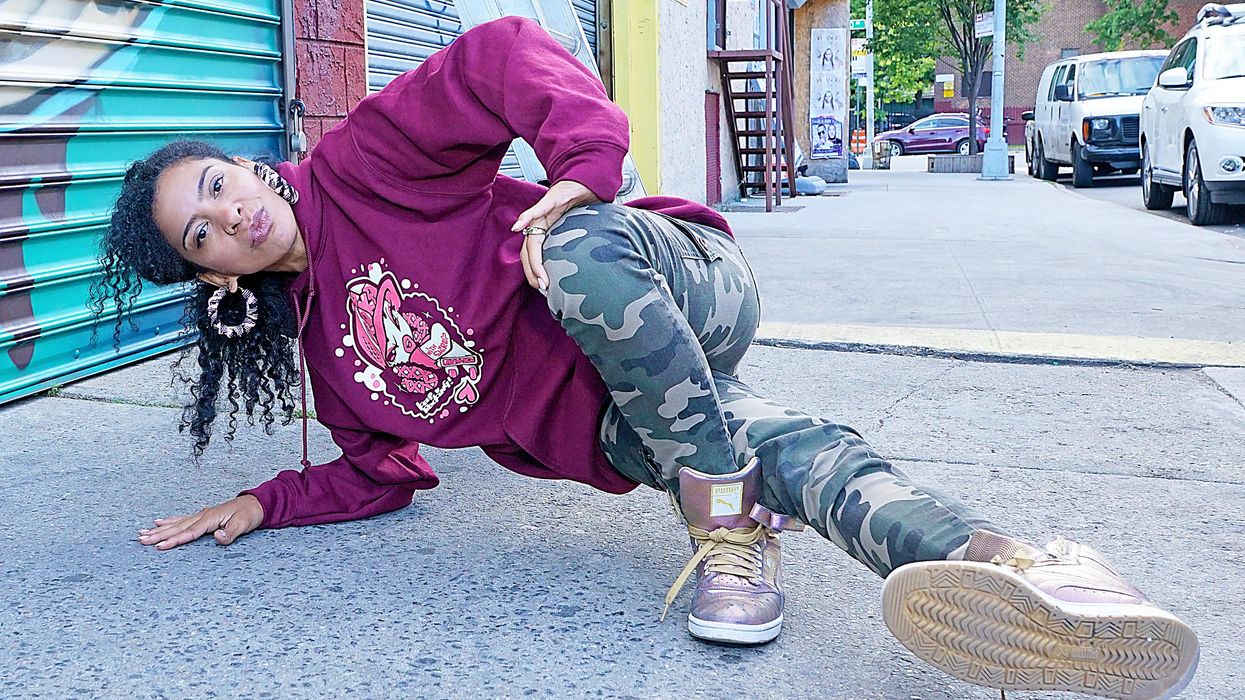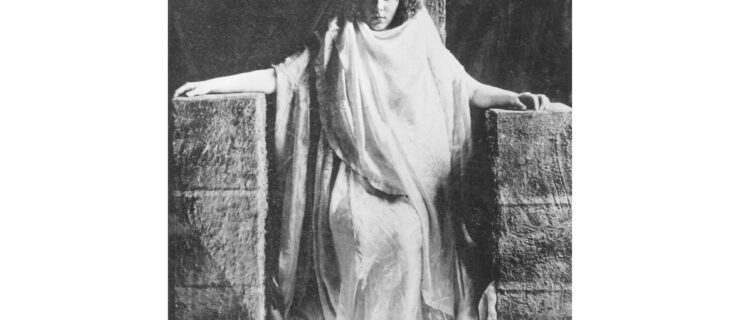The B-Girl's Battle for Equality in a Male-Dominated Style
It was the late ’90s, and breaking pioneer Ana “Rokafella” Garcia was in rehearsals for a major theater production with a crew of male breakers. A popular b-boy began making comments dripping with sexual innuendo about the only other woman in the group. With each consecutive rehearsal, the harassment progressed while other castmates stood by silently.
Finally, Garcia couldn’t take it any longer. “In my view, it was a typical abuser testing the waters, and getting away with it,” she says. So she spoke up and was met with resistance from the perpetrator, and a timid deflection from the female breaker. “She thanked me for what I was trying to do but asked me to stop, and nothing changed,” Garcia says. “As young b-girls deal with complex power dynamics, it can be really hard.”
In an industry dominated by men, b-girls have long faced an uphill battle. Physical differences, historically masculine origins, ingrained cultural bias and blatant sexism have made the mission to bring large swaths of women into the breaking world a slow and strenuous one. But as the popularity of the genre grows, so do the number of women interested in joining the ranks.
A Genre Built on Macho Disputes
Born from the hip-hop movement in the early 1970s, breaking is thought to have originated in the South Bronx through African-American and Latinx youth. According to the “History of Breakdancing” from Red Bull (which today puts on breaking competitions), at times it was a way for certain rival street gangs to settle disputes.
“The culture of breaking started with battling and throwing burns at each other,” says Sunny Choi, a b-girl and an advocate for diversity within the genre. “It’s always been a very aggressive, confrontational style.” Though a limited number of women participated in breaking during its inception (“and held their own,” Choi quips), this ego-driven element of the style may have kept other women from joining at a time when anger and aggression were considered unladylike. “If it’s not naturally your personality, it would be hard to approach as a woman in that generation,” she says.
What’s more, according to Rokafella, the cultural residue of the backlash against second-wave feminism plagued breaking for decades. “By the ’80s, there was still a sentiment that women were striving to come into a man’s workplace,” she says. Naturally, a struggle for equal pay followed.
While dancing on the streets of New York City, Rokafella fought for compensation equal to the men in her crew, but was turned down. “I would tell them that the audience puts more money in because I am there—even if that admitted that in some ways I was a gimmick,” she says. But the men said that they’d been dancing longer and were better than she was, so they refused to pay her at the same rate. The disparity was significant enough that it ultimately led to her leaving the group.

In the 1980s, crews like Floor Masters, Rock Steady Crew, NYC Breakers and Dynamic Breakers introduced acrobatic moves like head spins and hand glides to set the foundation for the genre we know today. The physical demands of the form have only grown since then, creating some hurdles for female breakers.
“Most power moves were made by men, and they don’t take into account women’s anatomy and how our center of gravity may differ,” Choi says. Certain tricks require women to work harder to develop the muscles necessary to accomplish them. For example, in order to build upper-body strength, Choi used to do 100 flares (a power move in which the dancer alternates balancing on either arm while swinging their legs in continuous circles—think male gymnasts on the pommel horse) at each practice.
“It can be challenging when it takes three times, or even 10 times, longer than a man to get something down,” Choi explains. Still, she says there is so much more dancers can do in breaking than explosive power moves. “You can find what you love within it, and excel.”
Pop Culture Comes In
As the physical demands of breaking increased in the ’80s, ’90s and early 2000s, pop culture and mass media popularized the style. Artists like KRS-One highlighted it in music videos (think “Step Into A World,” featuring breakers like Kwikstep and Rokafella), and the style eventually found its way to film and television. Cult classics of the ’80s like Beat Street (a 1984 dance film that featured New York City’s hip-hop culture) paved the way for the Step Up franchise and “America’s Best Dance Crew” in the late 2000s.
The exposure gave all breakers, including pioneering women, a platform that showed aspiring artists what was possible. “Seeing b-girls like Asia-One, Honey Rockwell and Rokafella perform on VHS tapes was massive for me,” says b-girl “Babygirl” Ericka Martinez. “When I watched Beat Street, it was like, ‘Oh, my gosh, there are other girls that do this?’ ”
But the spotlight on breaking had downsides, as well. “Women had to deal with new standards of looking alluring, glamorous and sexy in order to succeed in the commercialized world,” Rokafella says. Women were also pitted against each other often, since only one or two would be allowed in each crew at a time. “We couldn’t have a sisterhood,” Rokafella says. “We had to compete with each other.”
By 2010, breaking had grown into an industry primarily centered on independent competitions—a series of dance battles in which dancers don’t know the music ahead of time and have to improvise on the spot. These caught the eye of the corporate world; Red Bull, for instance, developed its Red Bull BC One competition. Artists began training under the tutelage of veteran performers not only in the streets or at the clubs, but in dance studios, as well.
“Some OGs have problems with the genre being commercialized, but I think the evolution is inevitable,” Martinez says. “It’s a great way to share it with others and educate young female dancers.”
With breaking slated to debut at the Paris 2024 Olympic games, Choi is confident even greater exposure will increase the number of women in the industry. “The U.S. is behind the rest of the world,” Choi says. “I have been to international events with over 100 b-girls, and that just doesn’t happen here.”
In recent years, more of the larger, international competitions have introduced separate b-girl battles, allowing women to shine independently. “The physical differences can sometimes make it harder for women to stand out,” Choi says.
Many members of the breaking community have shown support for b-girls and gender battles by praising b-girl movement, teaching about female breaking pioneers and, most importantly, promoting female-only events. This has led to immense growth in talent. Still, many don’t want to be pigeonholed.
“I didn’t grow up just battling women; I love battling men,” Martinez says. “I loved vibing out in the cyphers and showing them how capable I was, that I could be just as good, and even better.”
The B-Girl Experience
Despite their growing prominence in the industry, b-girls in 2021 still have to deal with frustrating amounts of misogyny. “I have had many experiences competing where men have screamed nasty things at me,” Choi says.
According to Martinez, she has yet to attend a jam in which something inappropriate hasn’t been said or done toward a woman—which has led many to stop dancing. Even a gesture like men putting their hands on the small of women’s backs to walk them across the floor in the cypher feels condescending. “They would never do that to a man,” Choi says. But what might be most maddening for her is the mansplaining. “I once had a man try to teach me how to do a flare to 90—something I do all the time.”
Yet Martinez believes things are improving as more women join the genre and band together. “Women are verbalizing when things are unacceptable, and defending each other,” Martinez says. “The playing field isn’t equal yet, but we are working together in larger numbers to move us forward.”
Movement that society would traditionally deem intensely masculine is celebrated in breaking, yet women in the genre can choose whether they want to embrace it, or tap into their femininity. Choi, for example, is not a macho competitor. As she grooves to the music, an elated smile spreads across her face, letting her competitor and the audience know she is having a great time. “I’m not trying to play up the fact that I’m a woman,” she says. “I just dance authentically to who I am and how I feel.” Martinez, on the other hand, tends to embrace an old-school attack—which she says feels more true to who she is. “I grew up in a household full of brothers,” she says. “I took my anger from what I saw at home and put it into my dancing.”
And as the form’s Olympic debut approaches, Choi and Martinez hope the up-and-coming generation of female breakers embrace their womanhood. “You don’t have to dance the way others tell you to,” Choi says. “Find a way of moving that is authentic and makes you happy, and stay on that path.”




